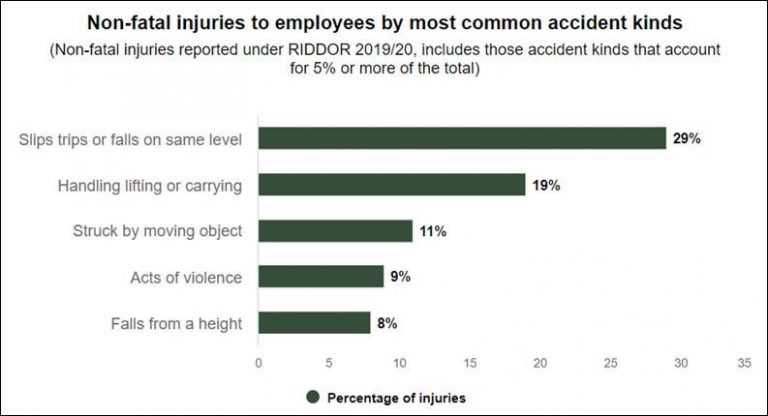The NAS has listened to its Members and have worked closely with our Approved Training Provider Perses to create an industry specific bespoke Manual Handling in Shopfitting/Fit-Out and Interior Contracting course.
This half day CPD Accredited course is valid for three years. It can be delivered online via Virtual Classroom or in person at
Training Centre Locations
- Bradford (BD10 0JE)
- Hyde Nr. Manchester (SK14 4QP)
- Bonnybridge, Scotland (FK4 2AG)
Delivery at your location (Nationwide)
- Must have 10 delegates
- Prices upon application
- Contact enquiries@shopfitters.org
The first course, will be delivered online via Zoom on Thursday 25 Nov 2021 08:45-12:45. To book – please contact enquiries@shopfitters.org.
NAS require 10 individual (in or outside of NAS Membership) delegates to run this course. 10 is the Maximum, there is no minimum.
- Online via Virtual Classroom (ZOOM) NAS Member Rate £425+VAT (£42.50+vat pp), Non Member rate £625+ VAT *based on 10 persons* (£62.50+vat pp)
- Classroom Delivery NAS Member Rate £600+VAT (£60.00+vat pp), Non Member rate £750+ VAT *based on 10 persons* (£75.00+vat pp)
Manual Handling is not deemed a ‘Construction Only’ course, no CITB Grant available.
Contact us to book your place
Shopfitting and Interior Fit-Out, by it’s very nature, involves a host of manual handling activities many of which, if not properly managed, can contribute to delays, additional costs and most importantly of course, injuries.
The NAS believes that most, if not all, of these concerns and hazards are generated the moment a project is conceived. The Health and Safety Executive (HSE) is focussing on Musculoskeletal Disorders (MSDs).
480,000 Workers suffering from work-related musculoskeletal disorders (new or long-standing) in 2019/20 Labour Force Survey (LFS)
8.9 million Working days lost due to work-related musculoskeletal disorders in 2019/20 Labour Force Survey (LFS)
Manual Handling injuries can include work-related musculoskeletal disorders (MSDs) such as pain and injuries to arms, legs and joints, and repetitive strain injuries of various sorts. The term manual handling covers a wide variety of activities including lifting, lowering, pushing, pulling and carrying. If any of these tasks are not carried out appropriately there is a risk of injury.
With this bespoke (industry specific) course, the NAS seeks to reduce these issues by promoting improved planning, control and management. This course should be seen as complementing your safe systems of work and not an alternative to them.
Every shopfitting/Fit-Out project will have an element of manual handling. This will range from moving sheet materials to bringing in bulky, often top or side heavy, finished furniture, such as cash desks or display units. Specialist trades, such as glaziers, tilers and structural steel installers, will also have their own manual handling tasks. You will also need to consider moving items via hoists or goods lifts. Not only are the loads often heavy, they can be difficult, unbalanced or fragile and access routes are often a challenge.
We all have a part to play in ensuring the health and safety of our teams and the working environment. For example, where it is not possible to avoid a manual handling operation, employers have to assess any risks of injury to their employees. To enable assessment to be concentrated where it is most needed, it is important to complete a Manual Handling Risk Assessment.
The acronym LITE is often used, reminding you to consider.
“L” Load
“I” Individual
“T” Task
“E” Environment
Health and Safety Legislation places a range of duties and responsibilities on those in our industry.
The Law
- The Construction (Design and Management) Regulations (CDM) 2015
- Health and Safety at Work etc Act 1974
- Manual Handling Operations Regulations 1992 (as amended) (MHOR)
- HSE Construction physical ill health risks: Manual handling
- HSE Manual Handling at Work – Training
- HSE Manual Handling at Work – Musculoskeletal disorders
- Legal Duties – Management of Health and Safety at Work Regulations 1999
- Construction manual handling: Plasterboard installation
Disruption to the economy towards the end of 2019/20 due to the emergence of COVID-19 as a national health issue, had the potential to have impacted on workplace injury and work-related ill health data for 2019/20, Non-fatal injuries at work in Great Britain reports state:
693,000 Workers sustained a non-fatal injury according to self-reports from the Labour Force Survey in 2019/20 (LFS).
65,427 Employee non-fatal injuries reported by employers in 2019/20 RIDDOR – Reporting of Injuries, Diseases and Dangerous Occurrences Regulations 2013
As you can see below, 19% were related to Handling lifting or carrying.



